Daugavpils Station #5: Plater's City.
Kraslava. A small, unassuming town located just over 40 kilometers east of Daugavpils. Situated on the picturesque Daugava River, it captivates with its charm and atmosphere at first glance. A second glance reveals that it's worth stopping here for a few hours and witnessing firsthand that it is not just another town on the way to Belarusian cities like Polotsk and Vitebsk but also a significant historical symbol of the influence of Polish culture on the lands of present-day Latvia.
And it's all because of the Platers.
The Plater family was a noble clan originating from the territory of present-day Federal Republic of Germany. Settling in Livonia, they eventually succumbed to Polish influences and, as a Polish noble family, left a permanent mark on history through their involvement in national liberation struggles, from the Kościuszko Uprising to the January Uprising. For many of us, the first association is with the heroic Emilia Plater fighting in the November Uprising. Those who have visited the Daugavpils fortress surely recognize the name of Count Leon Broel-Plater, executed in the vicinity for his participation in the January Uprising, commemorated by a plaque on the fortress grounds.
The Church.
Kraslava is well-connected to Daugavpils by bus, and that was the mode of transportation I chose. Upon arriving at the bus station, I knew the weather forecast was accurate, and rain was a possibility despite the sunshine and warmth. I had to set priorities, and the first one was St. Louis Church. The beautiful 18th-century structure funded by the Platers is captivating from a distance. Directly opposite the main entrance stands a statue of the Virgin Mary. As I entered the church, I passed by a lady whom I greeted and, moments later, turned out to be my guide. Initially, I sat in a pew, admiring the details of the baroque interior. Personally, the most impressive was the monumental main altar with a fresco depicting the theme of St. Louis embarking on a crusade. On the side wall, there was a "somewhat" enormous painting, the mystery of which was solved shortly.
At some point, I began to stroll through the church and saw the lady I greeted earlier timidly walking towards me. I approached her, introduced myself as a "tourist from Poland," and asked if she spoke Polish. She replied that she didn't speak but understood a lot in our language because she was half-Polish by origin, and she also had a Polish husband. However, the years of the Red Terror during the Soviet era effectively "untrained" her from using Polish as a functional language, even in the family. One of many similar stories from the region. The guide showed me around the church, told stories about the heroes depicted in the side altars (including St. Roch, St. Stanislaus, and St. George) and on the choir (founders of the church). Above all, she answered my riddle about the painting I mentioned earlier. It depicts, similarly to the aforementioned fresco, the theme of St. Louis setting off on a crusade, originating from Jan Matejko's workshop. Most likely, he is also the author of the sketch. It used to be in the main altar, but at the beginning of the current century, its restoration began. In the meantime, during conservation work, it was discovered that the painting covered a fresco. The decision was made to renovate both works and place the canvas on the side wall. Later, I was taken to St. Donatus Chapel, where his relics and the Plater family tomb in the church's basement are located. Afterward, I bought souvenirs from the kiosk run by the guide, thanked her, and continued my journey. While walking around the buildings near the church, I noticed a plaque indicating that from 1757 to 1844, Kraslava was home to the Higher Theological Seminary – the first higher education institution in Latvia.
Then, I briefly visited the Catholic cemetery and the nearby Polish school named, of course, after the Plater Counts. I spent a longer time there because the awning in front of the main entrance served as shelter during a downpour.
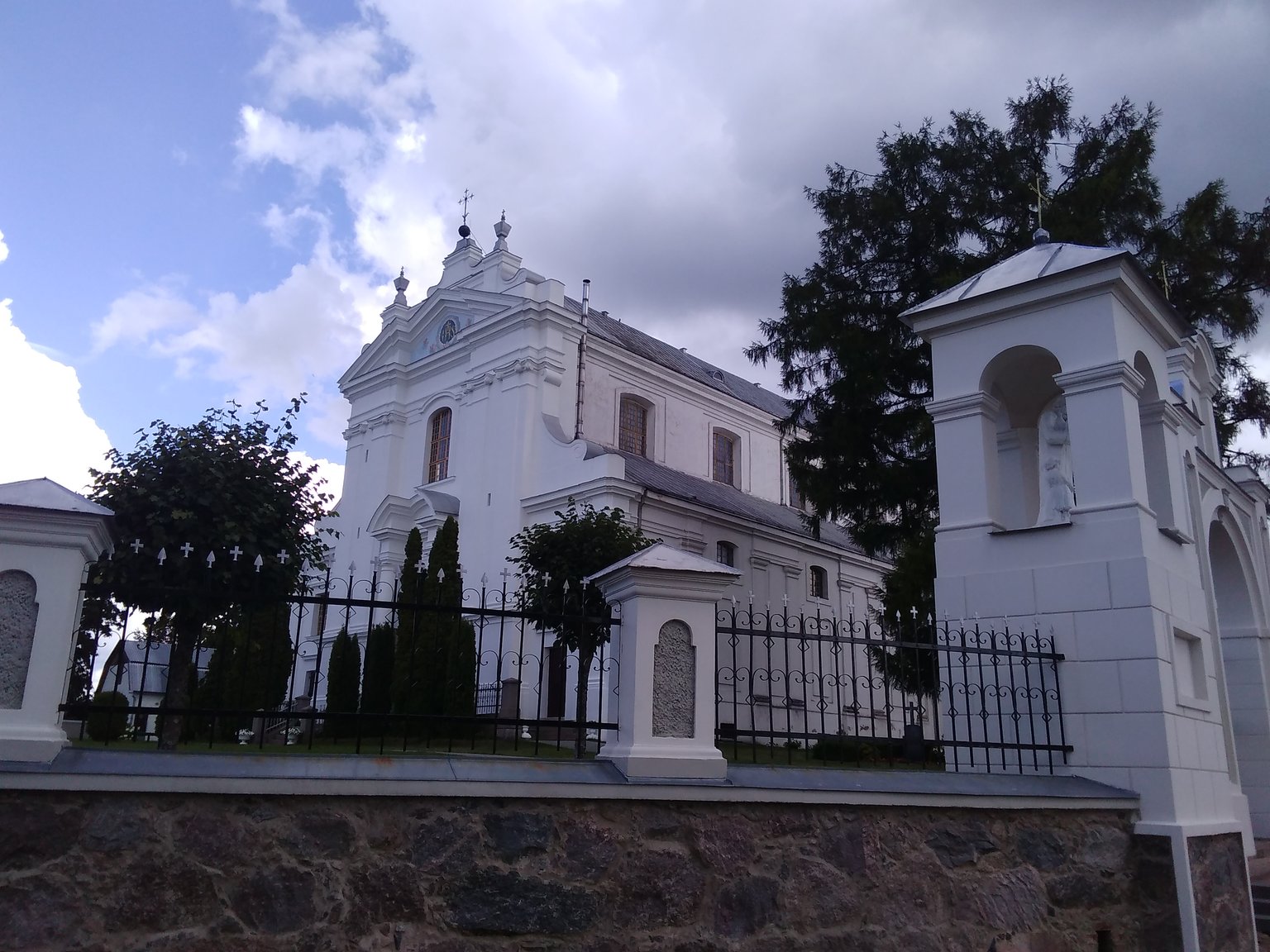
Church of St. Saint Ludwik, Kraslava
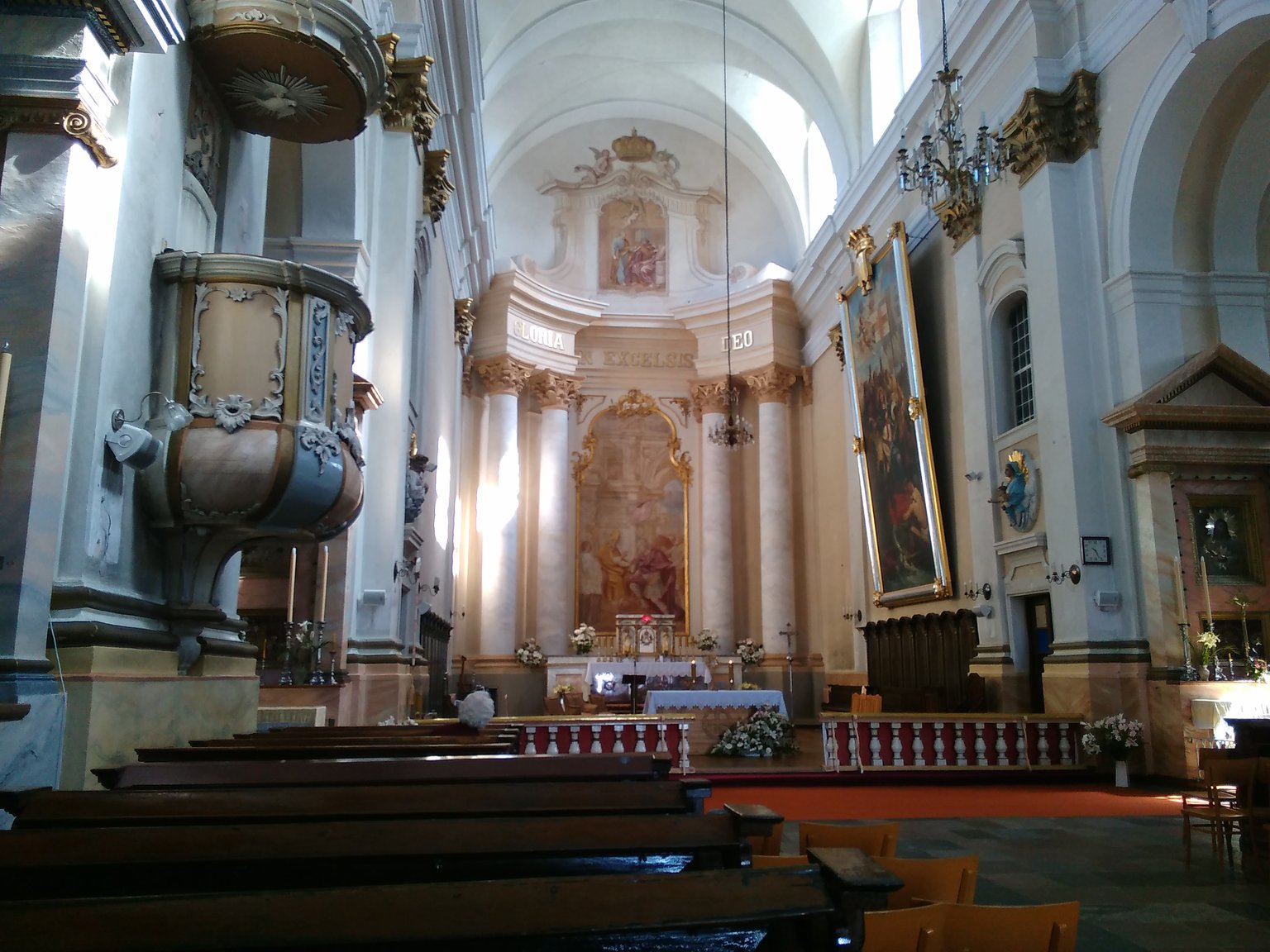
The chancel of the church of Saint Ludwik
Park and Palace.
The church is, of course, not the only remnant of the Plater family's activity in Kraslava. Upon entering the town from the Dyneburg side, almost opposite the road bridge over the Daugava, there is a park complex with a hill reached by a network of atmospheric alleys. At the top is the renovated (at least from the outside) palace, several buildings adapted today for various purposes, including a museum, tourist information, and a souvenir shop. There is also an observation terrace with a wonderful panorama of the Daugava and the surrounding area. While walking around, I heard many people speaking Latvian, and I assume they were more likely tourists than locals, suggesting that Latvians are interested in such places as part of their heritage and identity. At the foot of the hill is Plater's Counts Street – Grāfu Plāteru iela.
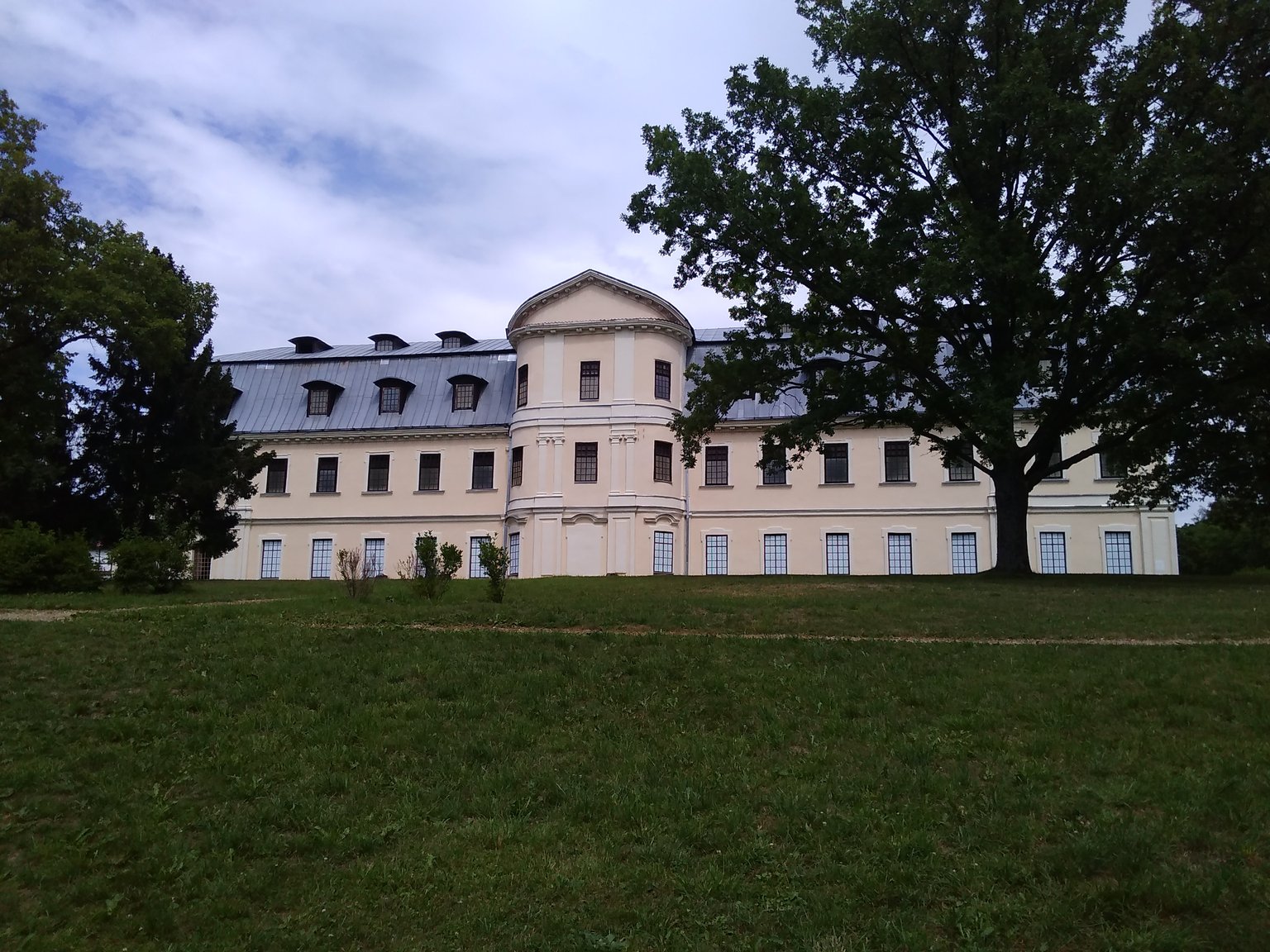
Plater Palace, Kraslava
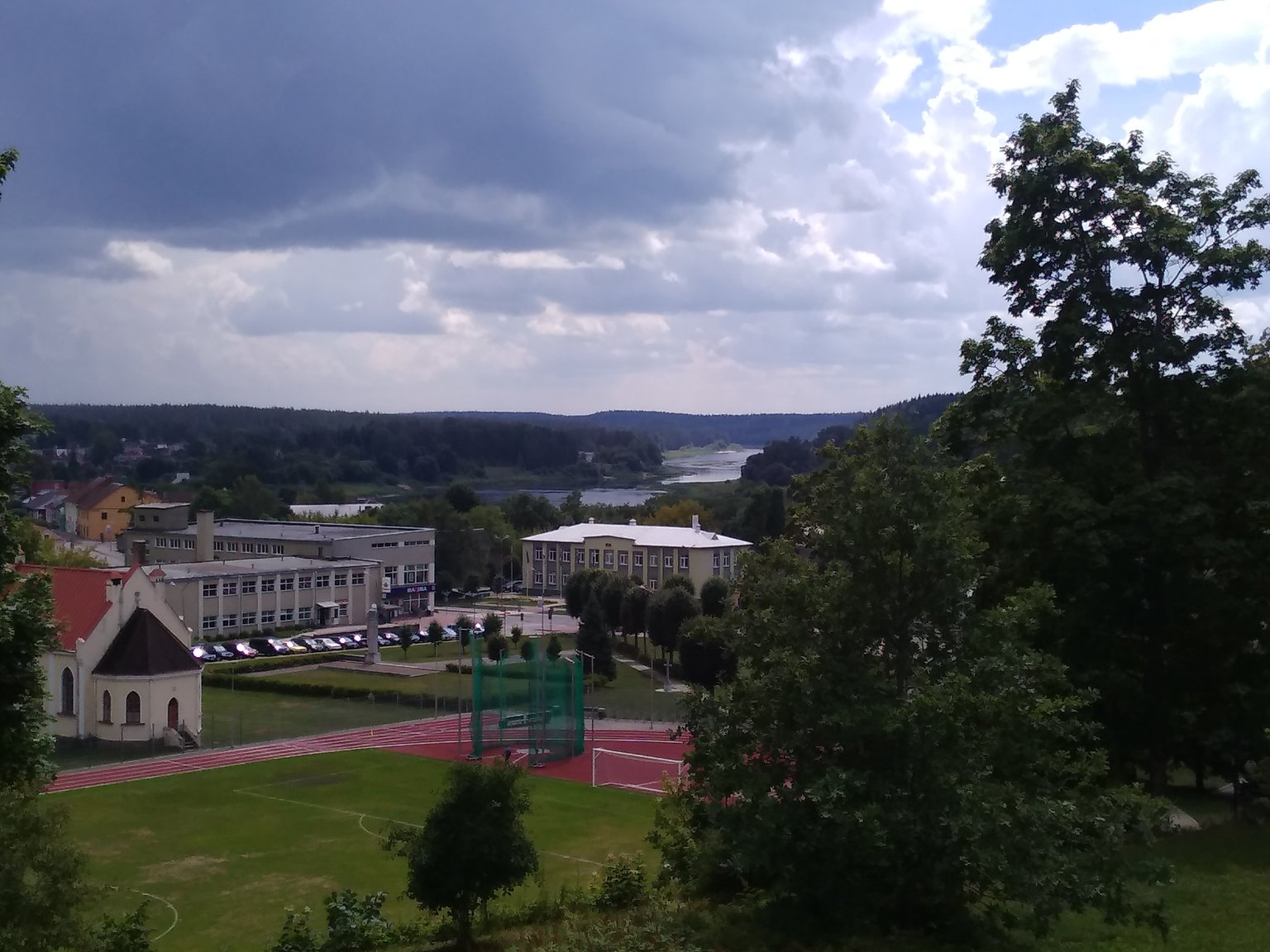
Panorama of Kraslava
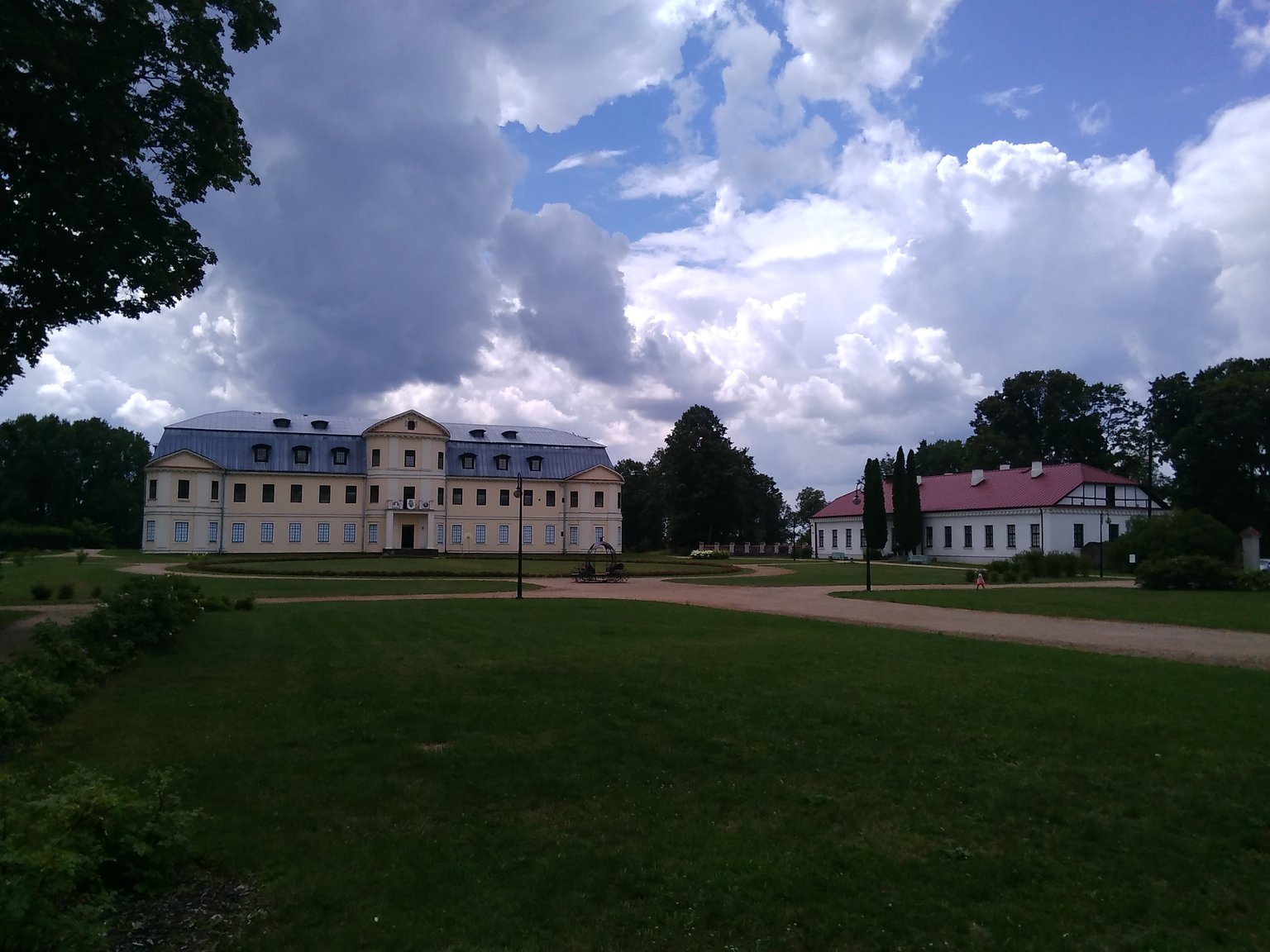
Courtyard of the Plater's Palace
Local Romeo and Juliet.
Kraslava also has its romantic-tragic story. On the western edge of the town, a few hundred meters from the main road, lies Karnicka Kalns - "Karnicki's Hill," the site of the suicide of Józef Karnicki, a young Polish officer. According to local legend, he fell in mutual love with the daughter of Count Plater – Emilia (different from the one involved in the November Uprising). Unfortunately, due to his impoverished noble origins, the parents of the Count's daughter did not consent to their relationship. After a failed attempt at a secret escape, they both decided to commit suicide – she was to jump from the castle tower window with a lit candle, and he, upon seeing this, was to shoot himself in the head. However, due to the suspicion of the daughter's household, she was stopped by servants at the last moment, someone extinguished the candle, and Karnicki unfortunately misinterpreted the signal, shooting himself after a moment. He was buried precisely at the scene of his death, and after some time, his remains were moved to Ewersmuiza, but the monument on the hill remains there to this day.
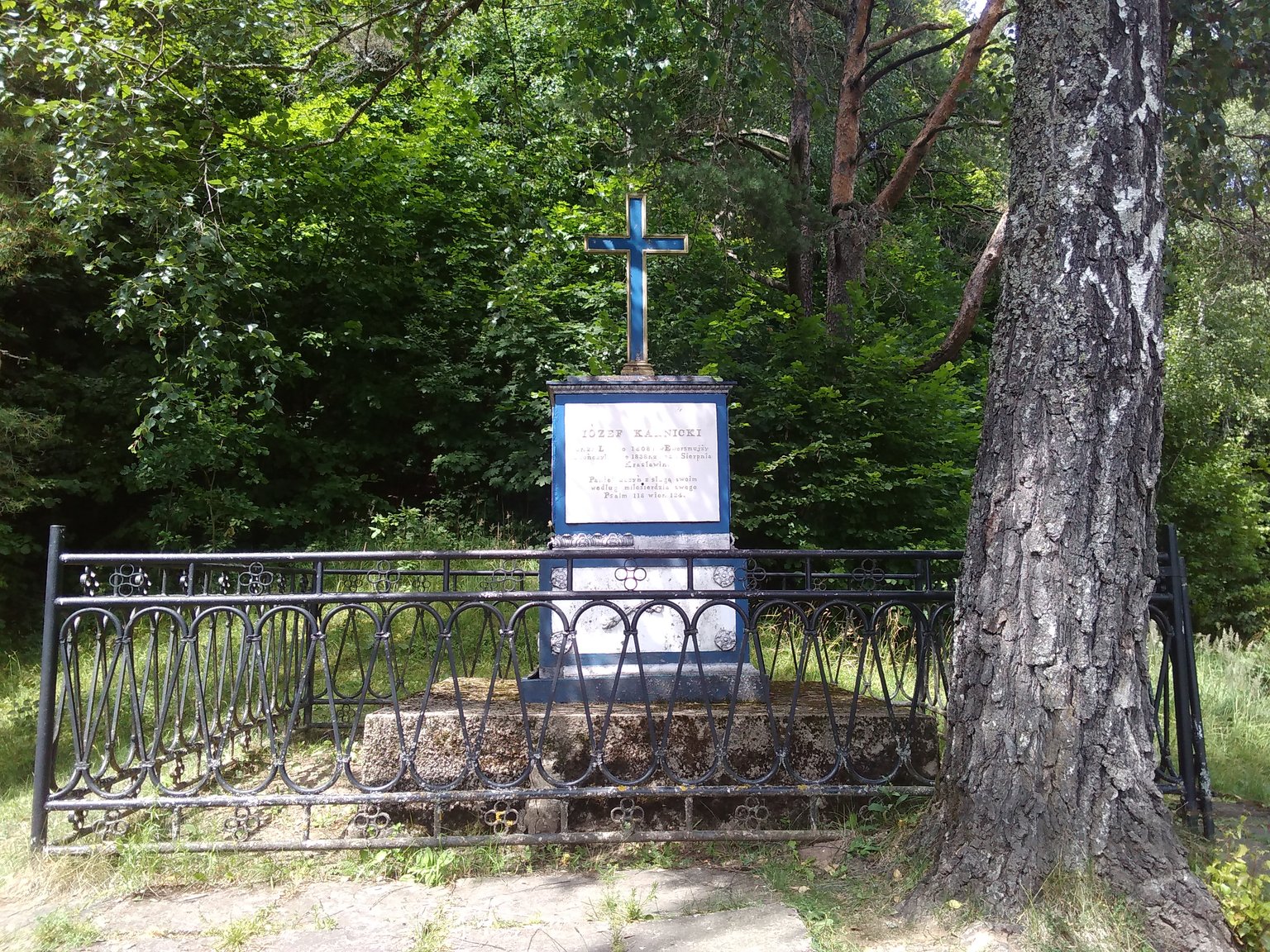
Monument with a cross in memory of Józef Karnicki
The Jewel.
Today's Kraslava is another jewel in the crown of Polish heritage in present-day Latvia. It's an interesting option for spending a few hours, perhaps an entire day. It is facilitated by good and convenient transportation to Daugavpils. The small-town atmosphere and the pace of local life provide a good environment for reflecting on the richness of history and places left to us by the noble Plater family. A family that saw something special in Poland and Polish culture, something they chose and developed as their identity, and whose effects we can experience to this day.
"Daugavpils station" is a multi-part reportage about the Polish community in eastern Latvia. It was published in 2018 in Polish on my old account @basementdisco. Five years after the premiere, I present versions in English.
Translations assisted by ChatGPT.